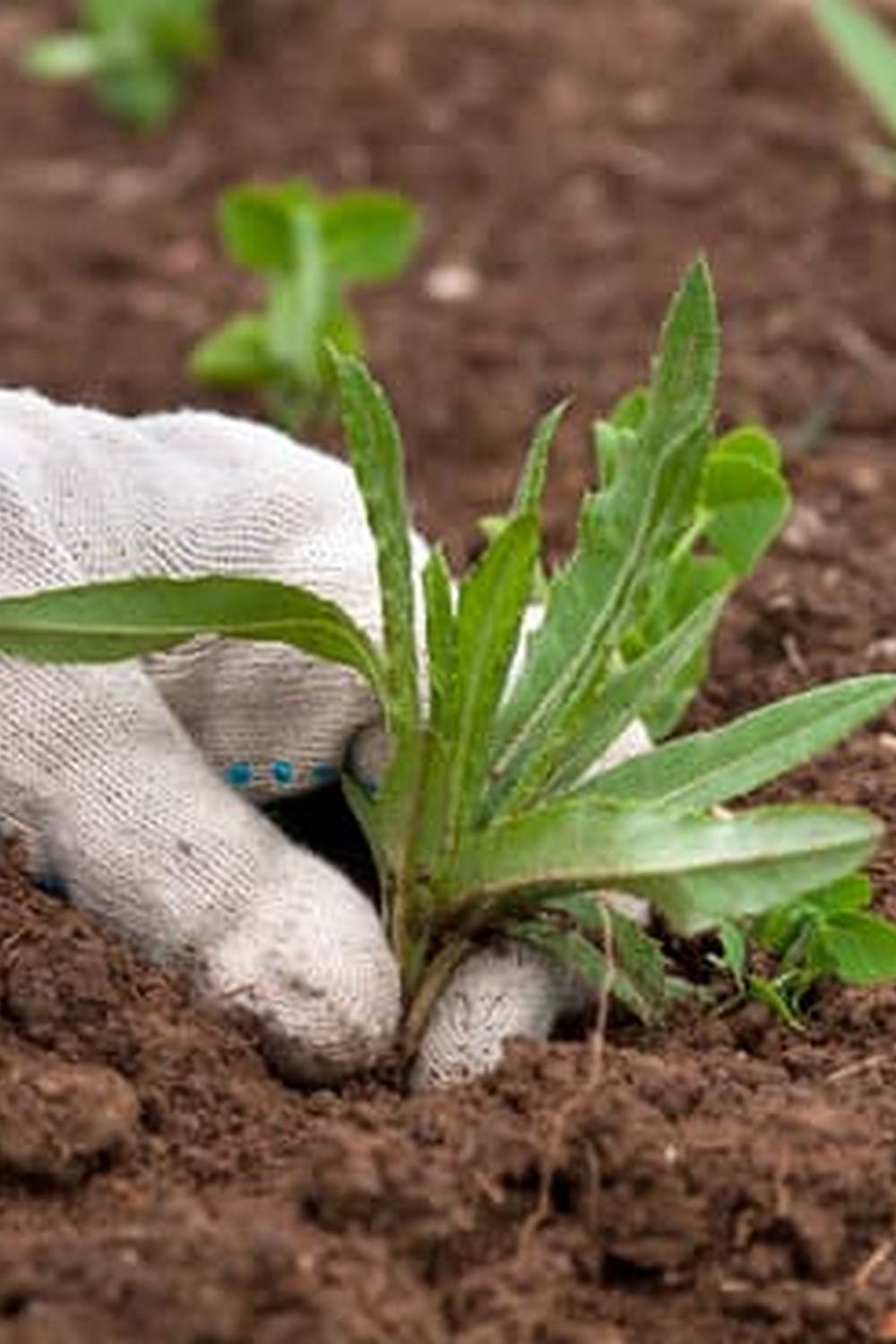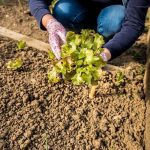Are you looking to create a beautiful and functional vegetable garden in your backyard? Vegetable gardening designs are essential for maximizing space, improving yield, and creating an aesthetically pleasing outdoor space. From raised bed gardens to vertical gardening, there are numerous design options to consider. By planning and designing your vegetable garden effectively, you can ensure a bountiful harvest while also enhancing the overall look of your garden.
The importance of well-designed vegetable gardens cannot be overstated. Not only do they provide a sustainable source of fresh produce, but they also offer a range of benefits including improved soil health, efficient use of space, and easier maintenance. Planning and designing a vegetable garden allows you to make the most of your available resources while also creating a visually appealing outdoor space.
When it comes to vegetable gardening designs, there are several types to consider. From raised bed gardens that maximize growing space to container gardens suitable for smaller areas, the possibilities are endless. Square foot gardening and vertical gardening are also popular options for those with limited space or looking for innovative ways to grow vegetables. Each design type has its unique advantages and considerations, making it essential to choose the one that best suits your needs and preferences.
Types of Vegetable Garden Designs
When it comes to vegetable gardening designs, there are various options to consider depending on your space, resources, and personal preferences. From raised bed gardens to vertical gardening, each type of design offers its own set of advantages and considerations.
Raised bed gardens are a popular choice for vegetable gardening designs as they provide better soil quality and drainage. They also make it easier to control weeds and pests while offering a convenient working height for planting, tending, and harvesting vegetables. Container gardens, on the other hand, are ideal for those with limited outdoor space or poor soil conditions. They allow for flexibility in placement and can be moved around to optimize sunlight exposure.
Square foot gardening is another innovative approach that maximizes space efficiency by dividing the garden into small square sections. This method not only reduces the need for weeding and maintenance but also promotes high yields in a compact area. For those looking to make the most out of vertical space, vertical gardening is an excellent option. By utilizing trellises, fences, or walls, this design allows for growing vining vegetables like cucumbers and beans without taking up much ground space.
No matter which type of vegetable gardening design you choose, it’s essential to consider your specific needs and limitations before making a decision. Whether you’re aiming for maximized yield or convenience in maintenance, there’s a suitable design out there for every gardener. With careful planning and thoughtful consideration of your available resources, you can create a vegetable garden that suits your lifestyle and provides bountiful harvests throughout the growing season.
Planning Your Vegetable Garden Design
Vegetable gardening designs are not just about creating a visually appealing garden; they also play a crucial role in the success and productivity of your vegetable garden. Planning your vegetable garden design is essential to ensure that you make the most out of your space, sunlight, and resources. By carefully assessing your space and considering the right vegetables for your climate and soil, you can create a thriving and bountiful vegetable garden.
When planning your vegetable garden design, it’s important to start by assessing the available space and sunlight in your garden. Take note of any shaded areas or spaces that receive limited sunlight throughout the day. This will help you determine which vegetables will thrive in different parts of your garden, allowing you to make informed decisions when choosing what to plant where.
Another important aspect of planning your vegetable garden design is selecting the right vegetables for your climate and soil. Consider factors such as temperature, rainfall, and soil composition when choosing which vegetables to grow. Certain vegetables may be better suited for specific climates or soil types, so be sure to do thorough research or consult with local gardening experts to make informed choices.
In addition to space and sunlight assessments, consider incorporating companion planting and crop rotation into your vegetable gardening design. Companion planting involves growing certain plants together to benefit each other in various ways, such as pest control or improved flavor. On the other hand, crop rotation helps maintain healthy soil and prevent disease by alternating crop families in different areas of the garden each year.
| Aspect | Consideration |
|---|---|
| Space and Sunlight | Assessing available space and sunlight for optimal plant placement |
| Climate and Soil | Choosing the right vegetables based on climate and soil conditions |
| Companion Planting & Crop Rotation | Incorporating beneficial plant pairings and rotation practices for successful gardening |
Layout and Structure of Vegetable Garden Designs
When creating a vegetable garden design, the layout and structure are essential factors to consider for maximizing space, accessibility, and productivity. There are several options to choose from when deciding on a layout, each with its own benefits and considerations.
Some popular vegetable gardening designs include:
- Raised bed gardens: These are elevated planting areas that provide good drainage, prevent soil compaction, and offer better control over the soil quality.
- Container gardens: Perfect for those with limited space or poor soil, container gardens allow for flexibility in arrangement and can be placed on patios, decks, or balconies.
- Square foot gardening: This method involves dividing the garden into square-foot sections, making it easy to plan and manage different varieties of vegetables in a small space.
- Vertical gardening: Ideal for those with limited ground space, vertical gardening utilizes trellises, arbors, or other structures to grow vining vegetables such as cucumbers, squash, and beans upward.
In addition to choosing the right type of garden design, it’s important to consider the overall structure of the garden. This includes creating pathways and access points for easy navigation and maintenance. Installing trellises or supports for climbing plants not only maximizes vertical space but also adds visual interest to the garden. Designing efficient watering and drainage systems is equally crucial in ensuring the health of your vegetable plants.
By carefully considering these layout and structural elements in your vegetable gardening design plan, you can create an efficient and productive growing space that meets both aesthetic and functional needs.
Designing for Aesthetics and Functionality
When it comes to vegetable gardening designs, functionality is key, but aesthetics are important too. A well-designed vegetable garden not only provides a bountiful harvest but also adds beauty to your outdoor space. By combining functionality with visual appeal, you can create a vegetable garden that is both productive and attractive.
Balance Between Functionality and Visual Appeal
Finding the balance between functionality and visual appeal is crucial in vegetable gardening designs. While the primary goal of a vegetable garden is to grow food, incorporating elements of beauty, such as colorful flowers or decorative borders, can enhance the overall look of the garden. Creating raised beds with defined borders or using attractive containers for container gardening are ways to add visual interest while maintaining the practicality of the space.
Incorporating Decorative Elements
Incorporating decorative elements into vegetable gardening designs can elevate the aesthetic value of the space. Consider adding garden art, such as sculptures or wind chimes, to bring a touch of personality to your garden. Additionally, pathways made from stone or mulch can create a sense of structure and order in the garden while allowing for easy access for maintenance and harvesting.
Multi-Functional Spaces
Designing multi-functional spaces within your vegetable garden allows for both productivity and relaxation. Including a seating area or a designated spot for outdoor dining amidst the growing plants can transform the space into an inviting oasis.
Utilizing pergolas or arbors for shade and vertical growing areas can contribute to both the functionality and aesthetic appeal of your vegetable garden. By thoughtfully integrating these features, you can ensure that your vegetable garden serves not only as a productive plot but also as a tranquil retreat within your outdoor landscape.
Seasonal Considerations for Vegetable Gardening Designs
When it comes to vegetable gardening designs, considering seasonal factors is crucial for a successful and productive garden. By incorporating seasonal considerations into your garden planning and design, you can maximize your yield and extend the growing season. This section will explore the importance of planning for year-round gardening, adapting designs for different seasons and weather conditions, and utilizing tools like cold frames and hoop houses for extended growing seasons.
Planning for Year-Round Gardening
One of the key considerations in vegetable gardening designs is the ability to have a continuous harvest throughout the year. By carefully selecting vegetables that thrive in different seasons and planning for successive plantings, you can achieve a year-round supply of fresh produce. Additionally, incorporating elements such as greenhouse or indoor growing spaces can further extend the growing season and provide an opportunity to grow warm-weather crops during colder months.
Adapting Designs for Different Seasons and Weather Conditions
Each season brings unique challenges and opportunities for vegetable gardening. During the hot summer months, it’s important to consider shading options for delicate plants and efficient watering systems to combat dry conditions. In contrast, cooler seasons may require protection from frost or a focus on cold-tolerant crops. By designing your garden with these seasonal variations in mind, you can optimize its performance regardless of the weather.
Utilizing Cold Frames and Hoop Houses
To further enhance your vegetable gardening designs, consider incorporating structures like cold frames and hoop houses into your garden layout. These tools provide protection from extreme temperatures, wind, and pests while creating a mini microclimate that extends the growing season. With careful planning and placement, these structures can enable you to grow vegetables well beyond their typical harvest times, allowing for an abundant supply of fresh produce throughout the year.
By integrating these seasonal considerations into your vegetable gardening designs, you can create a functional and productive space that provides fresh produce all year long. Whether you’re dealing with scorching summers or freezing winters, thoughtful planning and design adjustments can help ensure that your garden thrives in any season.
Maintenance and Care in Vegetable Garden Design
Maintaining and caring for a vegetable garden is essential for its long-term success. Implementing sustainable and low-maintenance design elements can make gardening more manageable and enjoyable. Incorporating composting and soil amendment areas can improve soil health and fertility, reducing the need for chemical fertilizers. Planning for easy pest and weed control can also save time and effort in the long run.
To maintain a healthy vegetable garden, it is important to implement sustainable practices. This includes using natural pest control methods such as introducing beneficial insects, practicing crop rotation to prevent soil depletion, and utilizing organic mulch to conserve moisture and suppress weeds. Additionally, incorporating a composting area into the garden design allows for the recycling of organic matter, creating nutrient-rich soil amendments that can benefit plant growth.
In terms of care, regular monitoring of plants for signs of disease or nutrient deficiencies is crucial. By implementing an effective pest management plan, such as using physical barriers or companion planting to deter pests, gardeners can minimize the need for chemical pesticides. Similarly, planning for efficient watering methods such as drip irrigation or soaker hoses can reduce water waste and promote healthy root development in vegetables.
Overall, integrating maintenance and care considerations into the design of a vegetable garden not only ensures the health and productivity of the plants but also contributes to a more sustainable and environmentally friendly gardening approach.
- Implement sustainable design elements
- Incorporate composting and soil amendment areas
- Plan for easy pest and weed control
- Utilize natural pest control methods
- Regularly monitor plants for disease or nutrient deficiencies
- Minimize the use of chemical pesticides
- Plan for efficient watering methods
Success Stories and Inspiration for Vegetable Gardening Designs
In conclusion, vegetable gardening designs play a crucial role in the success and productivity of any garden. By carefully planning and implementing a well-thought-out design, gardeners can maximize their space, improve functionality, and create an aesthetically pleasing environment. The different types of designs, such as raised bed gardens, container gardens, square foot gardening, and vertical gardening, offer diverse options for gardeners to explore based on their individual needs and preferences.
When planning a vegetable garden design, it is essential to consider factors such as available space and sunlight, climate and soil conditions, as well as companion planting and crop rotation. These considerations ensure that the chosen vegetables will thrive in the given environment while also promoting biodiversity and natural pest control. Additionally, incorporating elements for efficient watering and drainage is vital for maintaining healthy plants throughout the growing season.
Moreover, successful vegetable garden designs do not only focus on practicality but also emphasize aesthetics. By balancing functionality with visual appeal and integrating decorative elements like garden art and pathways, gardeners can create a beautiful outdoor space that enhances their overall enjoyment of tending to their crops.
This combination of form and function ultimately contributes to the overall success of vegetable gardening designs by providing inspiration for creating unique and innovative spaces that serve both practical and aesthetic purposes. Whether inspired by success stories or personal creativity, these designs contribute to a thriving culture of sustainable vegetable gardening practices.
Frequently Asked Questions
What Is the Best Layout for a Vegetable Garden?
The best layout for a vegetable garden depends on the space available, amount of sunlight, and types of vegetables you want to grow. Consider using raised beds or planting in rows to maximize space and make it easier to tend to plants.
How Do You Arrange Vegetable Garden Plants?
When arranging vegetable garden plants, consider their height and spacing needs. Taller plants like tomatoes and corn should be placed where they won’t shade shorter crops. Grouping plants with similar watering and sunlight needs can also help simplify maintenance.
How Do I Make My Vegetable Garden Look Good?
To make your vegetable garden look good, focus on keeping it organized and well-maintained. Use pathways between rows for easy access and consider adding decorative elements like trellises or colorful plant markers. Regular weeding and pruning will also keep the garden looking its best.

If you’re looking to get into vegetable gardening, or are just looking for some tips on how to make your current garden better, then you’ve come to the right place! My name is Ethel and I have been gardening for years. In this blog, I’m going to share with you some of my best tips on how to create a successful vegetable garden.





